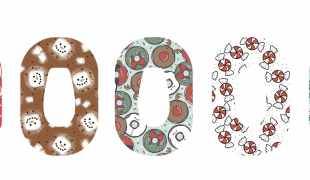- 8052
- 525
- 12
- 14
- 0
- Help Ukraine
About the solution
"The only clue as to why I was in the hospital was a thick, text-heavy book on my bedside table titled "Pink Panther's Guide to Understanding Type 1 Diabetes", the girl explained.
Lohitha had no idea what was happening on her body and felt responsible for developing diabetes. Her doctor drew a pancreas to explain how the disease works, but the patient wasn't able to understand why she would be needing to make so many meds. Besides that, she felt that the book she was given was too technical, especially for kids.
"It was supposed to be friendly for kids but it's just a bunch of text and numbers. It's really helpful for your parents to read so they know what to do when you can't take care of yourself at a young age", the inventor said.
So, in 2017, Lohitha developed a graphic novel that allows diabetic children to have more access to information that is more entertaining and relatable than the book she was given, so that they can understand their condition better.
After doing some research, the student invented a graphic novel that tells the story of a heroine, Kaci, a 10-year-old African-American girl who has just been diagnosed with Type 1 diabetes. She had the help of a professor so that she could make sure that the graphic novel accurately presented the physiology of Type 1 diabetes.
Lohitha's goal is to distribute this invention in pediatrician's office. She wants to test its effectiveness by surveying readers who are pediatric patients at the Children's Hospital of Richmond at VCU, and students in Richmond Public Schools. In order to do so, she is exploring inexpensive printing options so that the novel can be available to as many kids as possible.
"Not until years later did I understand the biochemical and physiological nature of the disease. I hope that any children diagnosed with diabetes in the future will not have to experience the loneliness and confusion that I did", the girl noted.
Adapted from: http://bit.ly/2H315SC
This solution shall not include mention to the use of drugs, chemicals or biologicals (including food); invasive devices; offensive, commercial or inherently dangerous content. This solution was not medically validated. Proceed with caution! If you have any doubts, please consult with a health professional.
DISCLAIMER: This story was written by someone who is not the author of the solution, therefore please be advised that, although it was written with the utmost respect for the innovation and the innovator, there can be some incorrect statements. If you find any errors please contact the patient Innovation team via info@patient-innovation.com
-
-
216
-
0
-
2098

Emily Imblum creates Pump Peelz-an entire line of custom fit graphics for diabetes medical devices.
(SELF)-CARE: EATING: Eating independently.
(SELF)-CARE: DRINKING: Drinking independently.
CAREGIVING
diabetes type 1
diabetes type 2
Gestational Diabetes
Educational/Leisure device (book, toy, game...)
Managing diabetes
Preventing (Vaccination, Protection, Falls, Research/Mapping)
Raise awareness
Caregiving Support
Endocrinology
General and Family Medicine
Pediatrics
United States
-
-
-
486
-
1
-
5836

Mother writes children’s book to raise awareness about her son’s food allergies
(SELF)-CARE: EATING: Eating independently.
(SELF)-CARE: DRINKING: Drinking independently.
Reading
Asthma
Allergic reaction (food, drugs, material/chemicals)
Book/Comic
Educational/Leisure device (book, toy, game...)
Nasal congestion
Dry cough
Rapid breathing (tachypnea)
Itching (pruritus)
Urticaria
Hoarseness
Stridor/wheezing.
Shortness of breath
Alleviating Allergies
Preventing (Vaccination, Protection, Falls, Research/Mapping)
Raise awareness
Dermatology
Immuno-allergology
Pediatrics
Pneumology
United States
-
-
-
558
-
2
-
12249

OmniPod® - a wireless insulin pump
(SELF)-CARE: EATING: Eating independently.
CAREGIVING
(SELF)-CARE: EATING: Eating independently.
diabetes type 1
diabetes type 2
Gestational Diabetes
Body-Worn solutions (Clothing, accessories, shoes, sensors...)
Enhancing health literacy
Promoting self-management
Restoring heart health
Managing diabetes
Manage Medication
Preserving Organ Function
Promoting inclusivity and social integration
To implement a diagnostic tool
To improve Treatment/Therapy
Preventing (Vaccination, Protection, Falls, Research/Mapping)
Raise awareness
Caregiving Support
Endocrinology
General and Family Medicine
Pediatrics
United States
-
 en
en